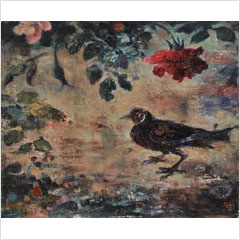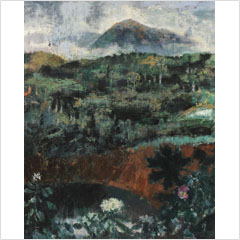須田国太郎
ハッカ
1922(大正11)年 油彩・カンヴァス 38.0×49.0mc
Kunitaro Suda
Jaca
1922 (Taisho 11), Oil on canvas, 38.0 × 49.0 cm
1922(大正11)年8月、須田はスペイン北東部アラゴン州のハカ(Jaca)を訪れました。8月4日の日記には「七時半ハッカへ」、途中「一瞬も目を離せぬ絶景」とあり、ハカは「小さいが西班牙としてはいい部に属する」とも記されています。マドリードを拠点にスペイン各地を巡った須田にとって、この町は魅力的な場所の一つとなったようです。
ハカはロマネスク時代の遺跡が残る町で、中世にサンティアゴ巡礼路の起点として定められました。本作には、街の南にそびえるオロル山とその裾野の荒野が描かれています。画面右下に描かれた建物や抑制された色調は、明暗表現を原理的に探求したキュビスムの絵画を連想させます。しかし、本作では劇的な明暗と色彩やマティエールを対比させて空間を生み出す須田の手法を垣間見ることができます。
In August 1922, Suda visited Jaca in the Aragon region of northeastern Spain. His diary entry from August 4th notes, "At 7:30 to Jaca," and describes the journey as "a breathtaking view that one cannot take their eyes off for a moment." He also mentions that Jaca is "small but belongs to a good part of Spain." For Suda, who traveled throughout Spain based in Madrid, this town became one of the charming places.
Jaca is a town with Romanesque ruins and was established as a starting point for the Santiago pilgrimage route in the Middle Ages. This work depicts Mount Oroel, towering south of the town, and the wilderness at its base. The buildings in the lower right of the painting and the restrained color palette evoke the paintings of Cubism, which fundamentally explored the expression of light and shadow. However, in this work, one can glimpse Suda's technique of creating space by contrasting dramatic light and shadow with color and texture.


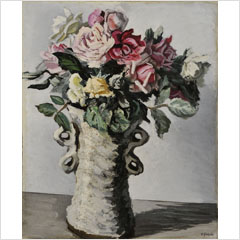
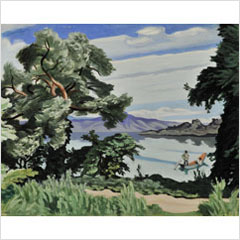

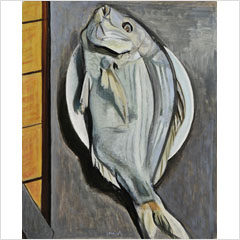

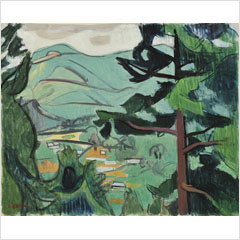

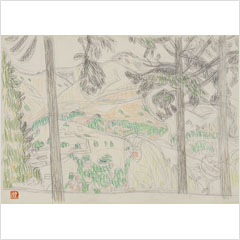

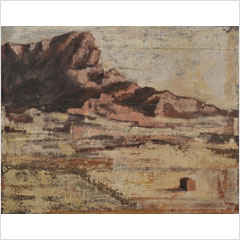

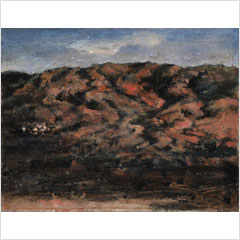

-1936s.jpg)
-1936m.jpg)
